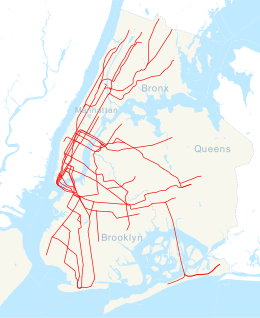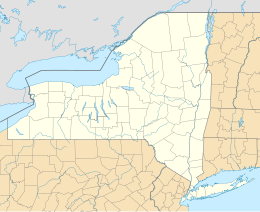23rd Street station (IRT Lexington Avenue Line)
Appearance
23 Street | |||||||||||
|---|---|---|---|---|---|---|---|---|---|---|---|
Uptown platform | |||||||||||
| Station statistics | |||||||||||
| Address | East 23rd Street & Park Avenue South New York, NY 10010 | ||||||||||
| Borough | Manhattan | ||||||||||
| Locale | Park Avenue South,[a] Gramercy, Flatiron District | ||||||||||
| Coordinates | 40°44′25″N 73°59′11″W / 40.740169°N 73.98644°W | ||||||||||
| Division | A (IRT) | ||||||||||
| Line | IRT Lexington Avenue Line | ||||||||||
| Services | 4 6 | ||||||||||
| Transit connections | |||||||||||
| Structure | Underground | ||||||||||
| Platforms | 2 side platforms | ||||||||||
| Tracks | 4 | ||||||||||
| Other information | |||||||||||
| Opened | October 27, 1904[3] | ||||||||||
| Station code | 405[4] | ||||||||||
| Accessible | |||||||||||
| Wireless service | |||||||||||
| Opposite-direction transfer available | No | ||||||||||
| Traffic | |||||||||||
| Passengers (2019) | 8,659,806[8] | ||||||||||
| Rank | 35 out of 424[8] | ||||||||||
| Station succession | |||||||||||
| Next north | 33rd Street: 4 28th Street: 4 | ||||||||||
| Next | Grand Central–42nd Street: 4 | ||||||||||
| Next south | 18th Street (closed): no service 14th Street–Union Square: 4 | ||||||||||
| Next | Bleecker Street: 4 | ||||||||||
| |||||||||||
| |||||||||||
| |||||||||||
23rd Street is a local station on the IRT Lexington Avenue Line of the New York City Subway. Located at the intersection of 23rd Street and Park Avenue South in Gramercy Park and Flatiron District, Manhattan. It is served by the 6 train.
After this station, the next stations will be 28th Street and 14th Street Union Square.
References
[change | change source]- ↑ C.J. Hughes (2018-01-31). "Living In / Park Avenue South: The Other Park Avenue Comes Into Its Own". New York Times.
Mail was occasionally delivered to the wrong addresses — to that other Park Avenue, residents said — and the street appeared to be trapped in real-estate limbo. It was neither here nor there, brushing by brand-name enclaves like Gramercy Park and Flatiron, but not belonging to them, and never really developing a personality of its own. ... With the 6 train directly under Park Avenue South, subway service is never far, although the trains can get jammed. Stops are at East 28th Street and East 23rd Street, and just outside the neighborhood at East 33rd Street and 14th Street‑Union Square, where other lines meet.
- ↑ "Chapter 1: Project Description". Hudson Square Rezoning: Final Environmental Impact Statement (PDF). New York City Department of Buildings. Retrieved July 24, 2018.
- ↑ "Our Subway Open: 150,000 Try It; Mayor McClellan Runs the First Official Train". The New York Times. October 28, 1904. p. 1. ISSN 0362-4331. Retrieved April 21, 2020.
- ↑ "Station Developers' Information". Metropolitan Transportation Authority. Retrieved June 13, 2017.
- ↑ "NYC Subway Wireless – Active Stations". Transit Wireless Wifi. Retrieved November 13, 2019.
- ↑ Attached PDF to "Governor Cuomo Announces Wireless Service and New "Transit Wireless WiFi" in Queens and Manhattan Subway Stations", governor.ny.gov
- ↑ "Facts and Figures: Annual Subway Ridership 2014–2019". Metropolitan Transportation Authority. 2020. Retrieved May 26, 2020.
- ↑ 8.0 8.1 "Facts and Figures: Annual Subway Ridership 2014–2019". Metropolitan Transportation Authority. 2020. Retrieved May 26, 2020.
Notes
- ↑ The New York Times and the New York City Department of City Planning consider Park Avenue South to be a small micro-neighborhood between Gramercy and Flatiron. Park Avenue South is also the name of the street on which the 23rd Street station is located.[1][2]



